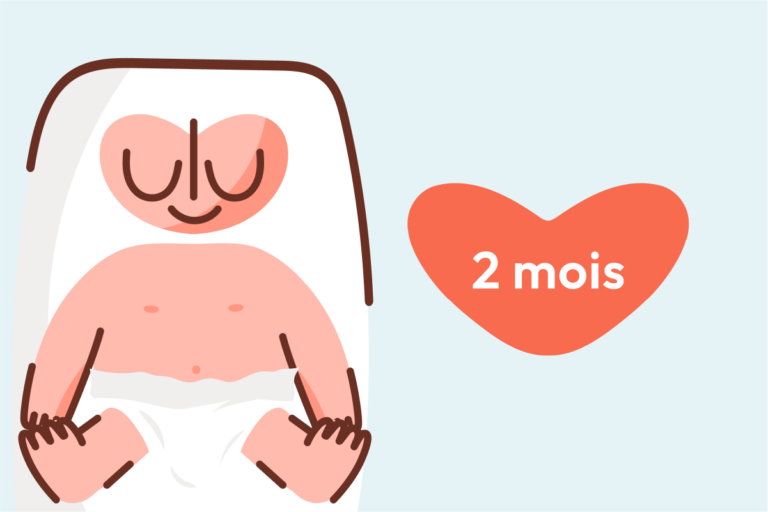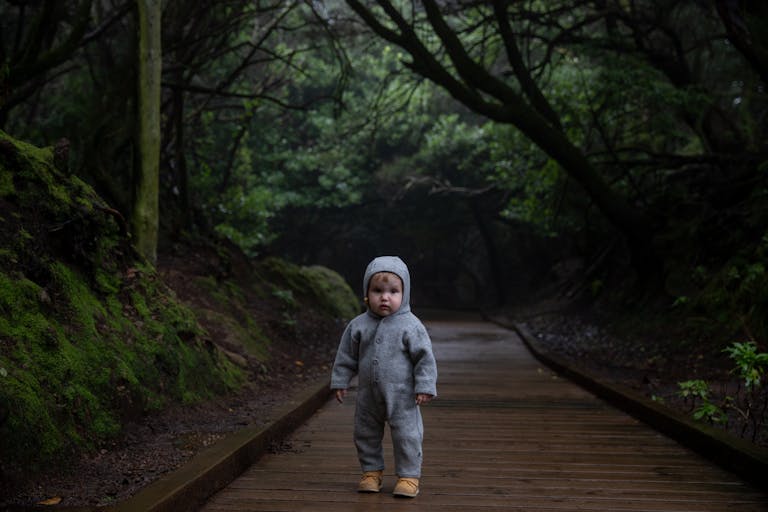From the very first days, when you run your fingers over your newborn’s delicate head, a gentle softness beneath the skin—known as the baby fontanelle—can spark both curiosity and worry. Is it safe to touch? Can you notice it pulsing? Should it feel sunken, or firm, or perhaps just slightly raised? These questions tumble in your mind, almost as rapidly as your little one’s brain is growing beneath that soft spot. Caring for a baby brings an avalanche of new information, but understanding the baby fontanelle isn’t just about facts—it’s about reassurance, confidence, and noticing changes that matter. Why do these soft spots exist? How do you notice warning signs, and what truly requires a doctor’s advice? Whether you’re bathing your child or simply watching your baby sleep, learning about the baby fontanelle brings comfort and insight. You’ll discover scientifically grounded details about structure, function, health signals, and practical ways to care for your baby’s head—without needless anxiety.
What is a baby fontanelle and why is it there?
The architecture of a newborn’s skull
The baby fontanelle—sometimes called a soft spot—is an area where the skull bones have not yet joined. These gaps, covered by a protective membrane strong enough to shield the brain, create a marvel of nature. Unlike the bony, fused skull of adults, newborns present with a flexible framework. This adaptability is vital. It enables the head to pass through the birth canal, and, afterward, it allows for brain expansion at a remarkable rate. You may notice the largest soft spot, the anterior fontanelle, right at the top of the baby’s head. There’s also a smaller one at the back—the posterior fontanelle—along with tiny lateral fontanelles (sphenoidal and mastoid) near the temples and behind the ears.
Flexibility for growth and safe passage
Why retain these openings? Quite simply, the baby fontanelle lets the skull adapt to the pressures of birth—bones subtly overlap, easing that first journey into the world. Afterward, the magic doesn’t end; your baby’s brain is growing so rapidly that the skull must be malleable to keep up. It’s nature’s way of lending space for development, all while the membrane (composed of connective tissue) guards the sensitive brain.
Types, location and closure timeline
Mapping the soft spots: anterior, posterior and more
Most newborns have six fontanelles. Here’s where each one is found:
- Anterior fontanelle: Diamond-shaped, at the crown—measuring about 0.6–3.6 cm at birth, often closing between 13–24 months.
- Posterior fontanelle: Tiny and triangular, at the back, sealing by 2–3 months, occasionally even at birth.
- Sphenoidal fontanelles: Near each temple, less noticeable, closing by about 6 months.
- Mastoid fontanelles: Behind the ears, closing between 6–18 months.
Doctors monitor these at every health check. The anterior fontanelle remains accessible the longest, serving as a reliable window into a child’s ongoing growth.
How the fontanelles change over time
At first, the baby fontanelle is easily palpable—soft, yielding a little to your fingertip yet springing back thanks to the resilient connective tissue beneath. Over months, the edges of the skull bones harden and move closer together in a slow, harmonious dance. By around two years, the openness is gone, bony plates seamlessly united. Throughout this period, you might even spot a gentle pulsation—a tiny heartbeat visible at the surface, a reassuring sign of normal blood flow.
The science behind baby fontanelle: composition and resilience
Fontanelles are not empty spaces—they are covered by a dense, fibrous membrane, both flexible and surprisingly robust. Directly beneath lies a web of blood vessels, nourishing the developing brain. Though soft to the touch, these zones are not fragile as many fear. Everyday activities like washing your baby’s hair or offering gentle cuddles will not pose any threat. The main rule: be gentle, but don’t hesitate in routine care.
Baby fontanelle and healthy development
Why these soft spots matter for brain and skull growth
The baby fontanelle doesn’t simply sit passively atop your baby’s head—it actively accommodates rapid brain growth, especially in the first years of life. The skull’s readiness to expand ensures the growing brain has space to develop its incredible faculties. During vaginal delivery, these soft spots enable the unique ‘molding’ of the skull, ensuring safer passage into the world.
When do the fontanelles close? What influences the timeline?
Each baby is unique—genetics, hormone levels, nutrition and even birth circumstances play a role. Although the posterior fontanelle is typically gone by three months, the anterior fontanelle lingers far longer—often until the second birthday. Premature closure may hint at conditions such as craniosynostosis (where one or more skull sutures fuse ahead of time), while excessive delay in closure might be associated with hypothyroidism, rickets or syndromes such as Down syndrome. Pediatricians will be attuned to your child’s individual rhythm, offering reassurance or additional tests if needed.
Early or delayed closure: what does it mean?
If the fontanelle closes sooner than usual, it may signal restricted brain growth—prompting an expert’s input. Conversely, fontanelles that persist past the standard closure age require investigation for metabolic or chromosomal problems. Both extremes are uncommon, but attentive observation helps ensure healthy progress.
Everyday care and handling of your baby’s fontanelle
Is it truly safe to touch and wash?
Definitely. The baby fontanelle is designed for life’s daily routines. A soft surface does not equal a weak one—remember, the membrane is perfectly engineered for protection. Washing hair, applying oil, or just discovering the contours while cuddling will not cause harm (though strong, direct pressure is best avoided). Soft, caring hands are all you need.
Bathing, hygiene and safe positioning
Opt for mild, tear-free shampoos; avoid brisk rubbing over the fontanelle. Always provide gentle head and neck support, especially in the early weeks. Whenever your baby sleeps, ensure they rest on soft, safe bedding free from hard or sharp objects. Regular gentle cleaning, paired with a watchful eye for swelling or sinking, forms the gold standard.
Preventing head flattening (positional plagiocephaly)
A newborn’s head shape is incredibly malleable. Prolonged pressure in one area can lead to a slight flatness—a scenario known as positional plagiocephaly. What helps? Alternate your baby’s head position during sleep, but remember—on the back to sleep remains the safest. Daytime tummy time under supervision strengthens neck muscles and relieves cranial pressure. Varying how you carry your baby also helps distribute weight more evenly.
Recognising normal and concerning changes
A healthy baby fontanelle looks soft, flat, and at times, may pulse rhythmically. Bulging during crying, or a slight dip after a long nap? Typically nothing to worry about. Persistent swelling when your baby is calm, or marked depression, demands a closer look. These signals, especially when paired with other symptoms (lethargy, fever, vomiting), are best discussed with your healthcare provider.
Fontanelle as a window into health
Bulging fontanelle: possible causes
When a baby fontanelle remains protruding even when your child is at rest, it might indicate increased pressure within the skull. This raises the possibility of infection (e.g., meningitis), fluid build-up (hydrocephalus), trauma, or bleeding. Immediate medical review is warranted if this occurs with fever, irritability, poor feeding, or drowsiness.
Sunken fontanelle: what does it reveal?
A sunken baby fontanelle often flags dehydration—a scenario demanding swift action. Alongside fewer wet nappies, a dry tongue, or listlessness, seek prompt paediatric guidance. Quickly addressing hydration can make all the difference.
Concerns around closure: not just a date on the calendar
Sometimes, the fontanelle may seem too large (linked with preterm birth, family traits or conditions like Down syndrome or congenital hypothyroidism) or close too quickly (raising suspicion for craniosynostosis). Thorough paediatric checks, sometimes with imaging, clarify the cause.
Medical associations: fontanelle and underlying conditions
Enlarged fontanelle and third fontanelle
A larger baby fontanelle may sometimes be seen in babies with delayed closure—causes include hypothyroidism, vitamin D deficiency, and specific chromosomal conditions. A rare third fontanelle (additional soft spot) could suggest underlying syndromic or infectious processes, prompting further workup.
What your doctor checks
During health visits, doctors will palpate the baby fontanelle carefully—checking size, shape, tension and closure progression. This process, often quick and gentle, provides invaluable data about your child’s growth and neurological wellbeing. When findings are ambiguous, further evaluation (scans, blood tests) may follow.
Myths and realities about baby fontanelle
Misconceptions versus scientific reality
There’s a persistent myth that merely touching the baby fontanelle might harm the baby, or that its size relates to intelligence or health. Let’s be clear—the tissue is resilient, day-to-day gentle touch and care are entirely safe. Pulsing in the area reflects healthy circulation, not danger. It’s only when paired with symptoms like fever, constant bulging or marked depression that alertness is warranted.
Baby fontanelle across cultures and history
Traditional beliefs and practices
In many cultures, the baby fontanelle is layered with meaning—sometimes mystical, other times practical. Ritual protection, gentle handling, or even naming ceremonies revolve around the soft spot. Recognising these rituals, while grounding advice in medical fact, helps families blend tradition with science for holistic care.
Today’s understanding
Modern paediatrics has reframed the baby fontanelle—from a point of vulnerability to a natural, protective structure that signals both healthy growth and possible warning signs early on. Empowered with accurate information, parents can respond with both calmness and confidence.
When to call your doctor: warning signs to watch
- Persistent bulging or sinking of the baby fontanelle while calm and upright.
- Fever, refusal to feed, lethargy, vomiting, or seizures.
- Head injury, odd head shape, or fontanelle still open well after two years.
In urgent situations, avoid pressing the area, keep your baby calm and upright, and consult your paediatrician with any worries. Timely attention often transforms doubts into reassurance.
Key Takeaways
- The baby fontanelle plays an essential role in both brain growth and the birthing process—a true marvel of adaptation.
- Most variations in fontanelle appearance are part of normal development, but certain signs—persistent swelling, marked depression, or deviations in timeline—should prompt medical advice.
- Gentle handling, regular cleaning, and simple strategies like tummy time help both protect and support your baby’s head.
- Knowledge dispels myths; scientific guidance brings peace of mind.
- Your wellbeing matters too—lean on your healthcare team whenever questions arise, and consider the Heloa app for tailored advice and free health checklists for your child.
Questions Parents Ask
Can you see your baby’s fontanelle move or pulse?
Spotting a gentle throbbing or slight movement at your baby’s baby fontanelle—especially while your child is lying peacefully—is perfectly normal. This simply reflects blood circulating underneath that membrane. Visible pulsation, while sometimes surprising, is considered a healthy sign. Only when such movement occurs alongside other concerning symptoms (high fever, unusual irritability, or persistent lethargy) should you reach out to your paediatrician.
Can a baby’s fontanelle tell you if your baby is dehydrated?
Absolutely. A sunken baby fontanelle can be a visible indicator of dehydration, especially when paired with other signs such as dry lips, fewer wet nappies, or seeming listlessness. Sometimes this happens with fever, heat, diarrhoea, or poor feeding. If you notice these changes, offer fluids and seek your healthcare provider’s advice quickly.
Does a baby’s fontanelle hurt if touched?
Not at all. The baby fontanelle is designed to withstand gentle daily touch. Washing your baby’s hair, light stroking, or gentle handling during play are not painful—in fact, the underlying tissue is quite resilient. As always, approach with care, but know that regular contact during cuddling or cleaning is entirely safe.









